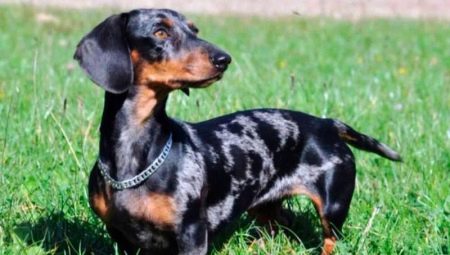An amazing dog breed marble dachshund is a very active, friendly and affectionate pet that quickly becomes a faithful and devoted friend of each family member. It is great for keeping in an apartment, for large families with children, is distinguished by curiosity and a calm character.
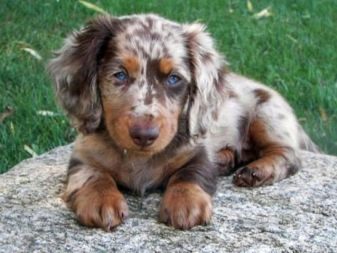
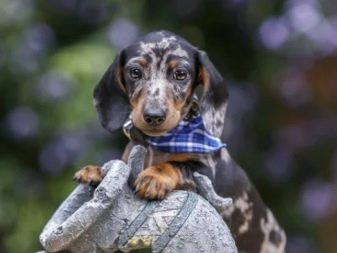
History reference
To date, there is only a hypothesis about the origin of this breed. The assumption is based on found ancient Egyptian images of short dogs with a long body and short paws. The age of these papyri is about 2000 years. Low-born hounds, as well as terriers, are considered a long-time progenitor of the breed, therefore dachshunds have excellent hunting skills, a sharp dog scent and intelligence.
Mentioning of dachshunds appeared at the beginning of the XVIII century. The first representatives of this breed were larger than modern ones and weighed about 18 kg. The sizes of newly hatched individuals gradually decreased, which allowed the dogs to hunt small animals. The oldest representative of the breed is the short-haired dachshund. It was bred in the 17th century as a result of crossbreeding hounds of short stature and pinschers.
In the 17th century, long-haired breeds appeared. Their ancestors are smooth-haired dachshunds and spaniels. In 1879, the breed standard was designated.
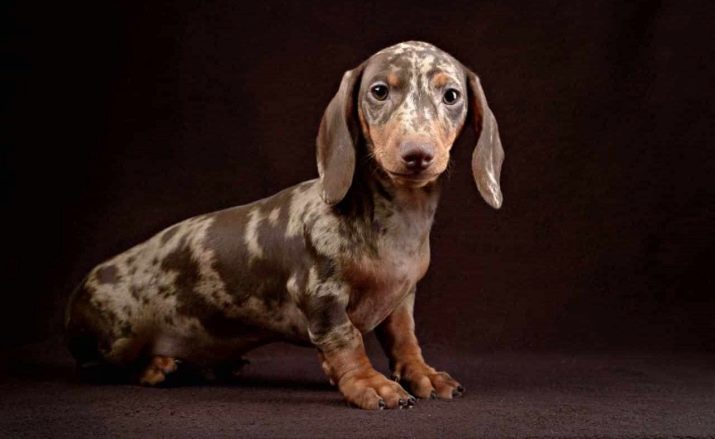
Variety of species
In nature, several types of dachshunds are known:
- Shorthair
- long-haired;
- wirecoat.


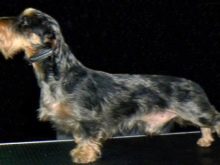
By size, dogs are divided into 3 types:
- standard (height at withers up to 25 cm);
- miniature (dwarf);
- rabbit (small, height up to 15 cm).
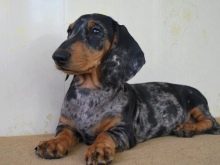
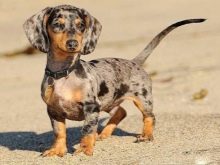
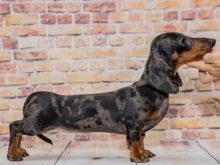
In addition, the breed standard allows several types of color:
- monochrome;
- two-tone;
- brindle;
- marble.
Of the monochromatic, the most common are dachshunds with red hair, the shades of which range from beige to almost red. Among two-color dogs, black and tan coloring is considered to be classical. That is, the dog is completely black with cream or chocolate spots on the face, above the eyes, in the chest and on the legs.
Often you can find a brown and tan color. These dachshunds have a brown nose instead of the usual black. Sometimes animals have white spots. If they are small and few, then this is not considered a marriage in the breed. Tiger-colored dachshunds are rare, but their appearance is worthy of attention. Its feature is the presence of dark stripes on a red background.
Among the hard-coated breeds there are also wild boar dogs (brown with light tan), absolutely black, gray-blue, beige-brown and others. Such types of coloring are not considered the breed standard, but are perfectly acceptable. The most unusual of all the varieties is the marble dachshund, which has an unusual coat color. This breed is a rare decorative species.


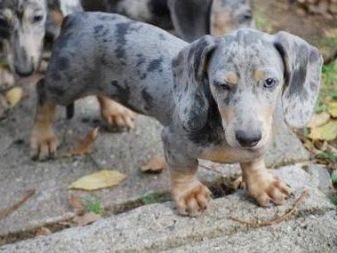
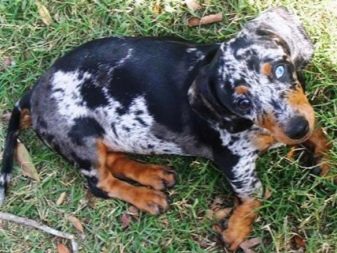
Breed characteristics
For individuals of marble breed, an elongated head narrowed to the nose with a sloping forehead is characteristic. Ears hang down to the center of the cheekbones. The body of the dogs is long with a strong skeleton and developed muscle mass. The neck goes into a straight back, the stomach is tightened. Paws are short, but strong, with a defined relief.
Thickened saber tail. The average weight of a marble dachshund, depending on the variety, is from 3.5 (rabbit) to 9 kg (standard). Like all types of breed, marble differ in the types of wool:
- wire-haired dachshund has a long, stiff coat, which forms a pronounced beard, mustache and eyebrows on the pet's face;
- longhair the variety has a short smooth coat on the face and head, and on the body, legs, tail and ears it is longer, slightly curly;
- in smooth-haired marble the dachshund pile is very short, soft and adheres to the body.
The main feature of the breed is the color of its coat: against a dark background are chaotic spots of a lighter color, evenly distributed throughout the body. The location of spots on the dog’s body is strictly individual and is not repeated in other individuals of the same species.
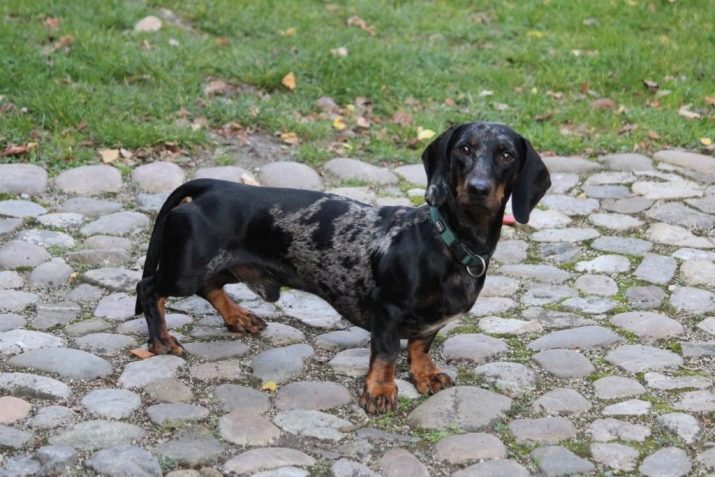
The most decorative ones are black-marble and coffee-marble wool. Reddish shades are allowed.
Very often puppies with blue eyes are born in the litter of marble dogs. This is due to a gene mutation. And also there are odd-eyed dachshunds, in which one eye is blue and the other is brown. The blue-eyed marble dachshund is highly decorative. The coat of such a dog almost always has a black-red color with a gray tint; dark-marble or coffee-marble tones are highly valued. Light brown or gray spots distributed throughout the body have different shapes.
When choosing a marble dachshund, you should definitely pay attention to bright contrasting shades of wool. As the puppies grow older, the color of the spots may change. Lighter ones will become smaller, darker and brighter. If the main color is dark, the number of spots may decrease. therefore it is better to choose a puppy with a large number of them.
The first time in a new house a little marble puppy will need a lot of attention. Be sure to explain to all family members, especially children, that the puppy is small, weak, and needs peace and quiet. In order not to injure the baby, it must be carefully picked up, not raised by the legs. Young children are recommended at first to completely forbid carrying a puppy in their arms in order to avoid its falls.
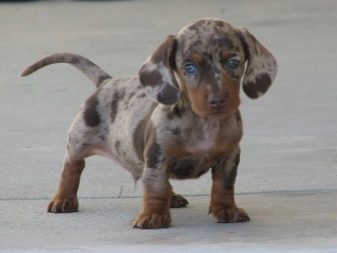
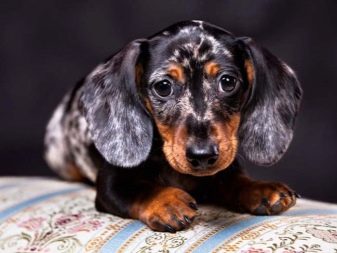
By their nature, marble dachshunds are friendly, affectionate, smart. They are mobile and hardy. Dogs are strongly attached to their master, catch his mood by the intonation of his voice. Pets require a lot of attention and care.
Of the negative qualities of character can be noted vindictiveness.
In case of mistreatment, the dachshund can harbor resentment and avenge revenge at the right time. To minimize the pet's capricious behavior, it is necessary to devote enough time to raising a dog from an early age.
For breeding puppies of marble colors a prerequisite is that one of the crossed individuals should have a standard color. The marble dachshund gene dominates the genes of other species, which provides marble offspring. Unfortunately, breeding marbled rocks has its own risk. It is associated with a mutation of the marbling gene, which can adversely affect the organs of vision and hearing of the animal.
For this reason, it is not recommended to cross among themselves marble individuals.. In the best case, puppies will acquire a double dose of marbling (double-merle), however, such experiments are fraught with weakened health in the offspring and the appearance of albino puppies.

Maintenance and care
For the favorable existence of the marble dachshund at home, it is necessary to give it due attention and care. Pet care is not particularly burdensome, but should include the following required measures:
- preventive examination and vaccination in order to detect and prevent diseases;
- daily walks in the fresh air;
- regular hygiene procedures (cleaning of ears, eyes, nose, teeth, claws), bathing at least 1 time in 1-2 months;
- daily combing of wool with a special comb or brush;
- balanced nutrition 2 times a day (specialized dry mixes, meat, cereals, fish);
- it is necessary to monitor the weight of the dog, prevent obesity, as it adversely affects its health.
In the most comfortable conditions, a marble dachshund can live on average 15 years. Representatives of the breed have good health and rarely get sick.
Most often, dogs have problems with the spine, eyesight, and cardiovascular system, so if any signs of malaise are found in a pet, it should be taken to a veterinary clinic.
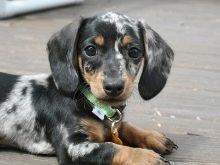
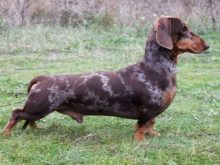

Advantages and disadvantages
For lovers of unique dogs, a marble dachshund is an ideal option, although it differs from other representatives of the breed only in peculiar shades of wool. A large number of dog breeders speak well of marble dachshunds. The positive features of dogs include:
- friendliness;
- independence;
- bravery;
- playfulness;
- devotion;
- resourcefulness;
- as well as simple conditions of detention.
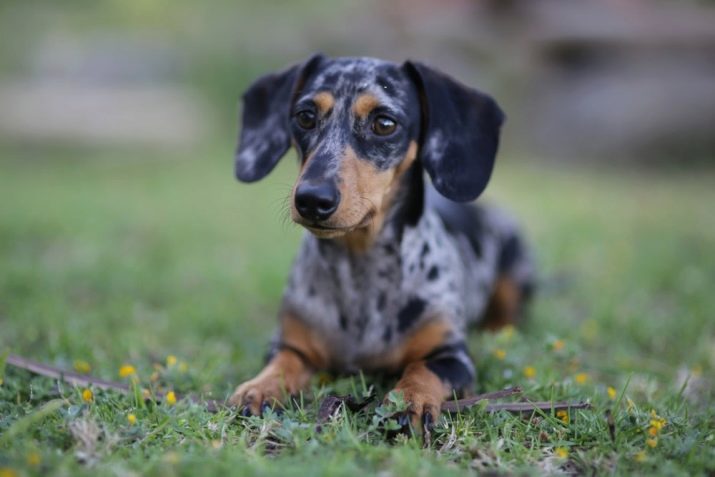
With a significant number of positive aspects, there are some negative factors:
- hereditary genetic diseases;
- difficulties in training;
- stubborn, masterful and touchy disposition;
- It is worth noting the considerable cost of thoroughbred puppies.
Given the attractive appearance and the peculiar nature of the marble dachshund, these animals are definitely worthy of attention. A cheerful and energetic pet in any family will create a cheerful atmosphere, become a faithful and reliable four-legged friend.
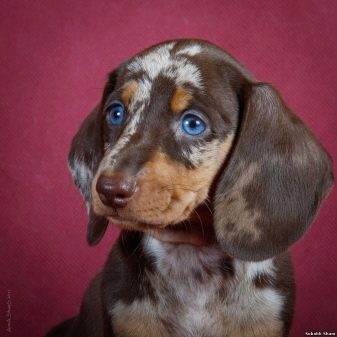

You can watch the marble dachshund closer in the next video.
